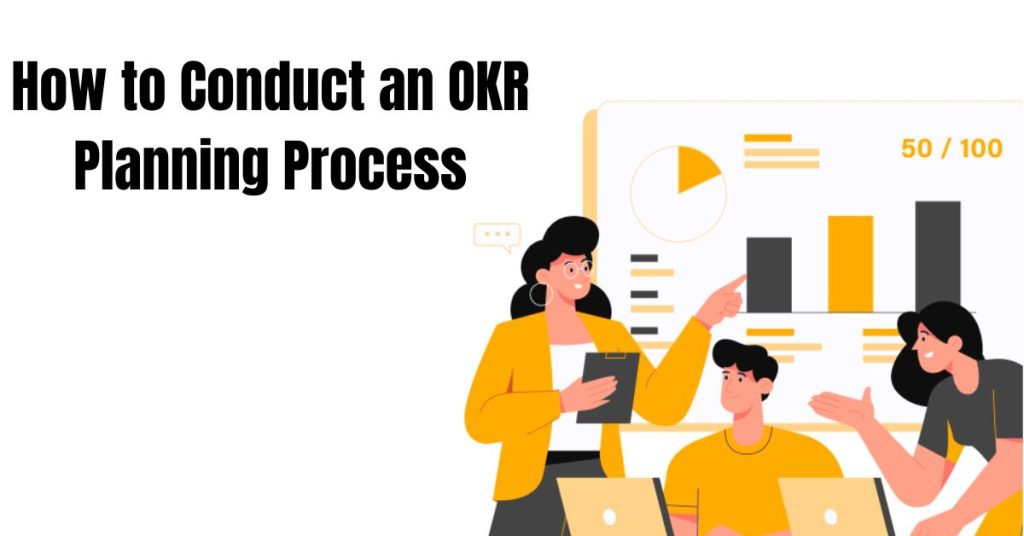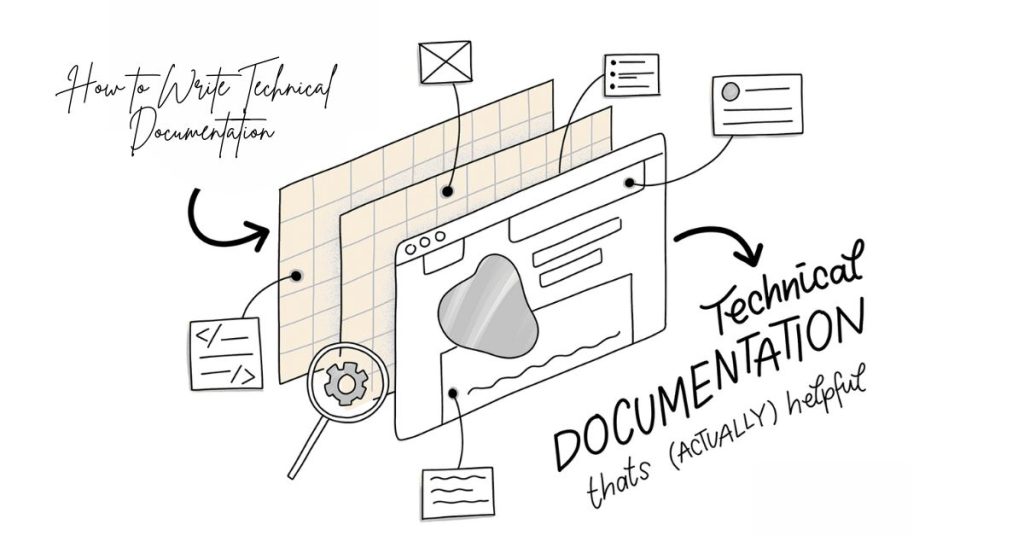In an era of rapid change—whether market shifts, technological disruptions, or evolving customer expectations—organisations increasingly adopt goal-setting frameworks that help them stay focused, aligned and agile. The OKR methodology (Objectives and Key Results) has become one of the most practical tools to bridge big‐picture strategy with day-to-day execution.
But setting OKRs is one thing; planning them properly is another. What separates OKR systems that thrive from simply lofty statements is the planning process: alignment, structure, review, and cultural adoption.
This blog will walk you through the planning of an OKR process step-by-step: what it is, how to structure effective OKRs, how to run the planning cycle, tools and best practices to maximise impact.
What is OKR Planning?
The term “OKR planning” refers to the structured process through which an organisation (or team) sets its Objectives and Key Results, aligns them to strategy, assigns owners, and builds the rhythm of review and adjustment.
At its heart:
Objective: What you aim to achieve—qualitative, inspirational, directional.
Key Results (KRs): The measurable indicators that tell you how you’ll know you’re succeeding toward that objective. They must be quantifiable and time-bound.
The planning process goes beyond mere formulation—it’s about aligning these goals across the organisation, capturing input and buy-in, prioritising what matters most, communicating those outcomes, then implementing, reviewing and iterating.
Why does this matter? Because many goal-setting frameworks fail not because the objectives are wrong, but because the planning and execution around them are weak. Using OKRs without a deliberate planning process leads to disconnection, misalignment, and goals that don’t produce meaningful outcomes.
How to Structure Effective OKRs

Before you launch into your planning cycle, you’ll want to ensure that your OKRs are structured in a way that gives them traction. A poorly constructed objective or ill-measured key result undermines trust and clarity.
1. Setting Ambitious Objectives
Your objective should be:
Clear and succinct.
Inspiring and memorable.
Aligned to your broader strategic priorities.
Limited in number (to avoid dilution). For example: one to three objectives per team per cycle is a good ballpark.
When you’re writing objectives ask: Why does this matter? What outcome do we want to create?
2. Defining Key Results
Key Results should be:
Quantitative and time-bound (e.g., “Increase X by 20% in Q2”).
Focused on outcomes, not merely tasks (“launch campaign” is less good than “achieve 15% increase in engagement”).
Limited per objective — typically 2-4 or 3-5 KRs per objective is a common guideline.
3. Examples for Clarity
Objective: “Improve customer satisfaction across our service channels.”
KR1: Increase Net Promoter Score (NPS) from 45 to 60 by end of quarter.
KR2: Reduce average support response time to under 2 hours.
KR3: Achieve 90% satisfaction rating on post-ticket surveys.
Objective: “Expand our presence in Southeast Asia.”
KR1: Launch localized website version in three target countries by end of Q2.
KR2: Gain 5,000 new qualified leads through regional marketing campaigns in the quarter.
KR3: Establish partnerships with at least five local influencers or agencies with cumulative reach 150,000+.
These examples show how objectives tie to strategic ambition; key results tie to measurable outcomes.
How to Run the OKR Planning Process

Now that you have structure, let’s look at how to concretely run an OKR planning cycle—from start to finish.
Step 1: Start with Strategy Alignment
Before anything else, ensure your OKRs are anchored in the organisation’s overarching strategy. If your objectives don’t support your long-term vision and strategic focus, you risk setting goals that look good but don’t move the needle.
During this stage:
Review corporate/organisational strategy, mission and long-term goals.
Identify priority areas for the upcoming cycle (quarter, half-year).
Ask: Which areas will make the greatest contribution to our strategic aims?
Derive potential team-level objectives that cascade from this strategy.
Step 2: Facilitate Brainstorming Sessions
With strategy in mind, gather cross-functional participants (e.g., marketing, product, sales, support) to brainstorm possible goals and initiatives.
During brainstorming:
Encourage input from diverse teams to broaden idea generation.
Use prompts like: What obstacles are we facing? What opportunities could we pursue? What outcomes would move us forward?
Record all ideas, encouraging creativity, then refine.
This step ensures buy-in, surface-level alignment, and diverse perspectives.
Step 3: Prioritise & Finalise OKRs
Once you have a list of possible objectives and key results, you must prioritise for focus.
Considerations:
Does this objective align with strategy and have the potential to move the business forward significantly?
Are the key results measurable, realistic yet ambitious?
Are we trying to focus on too many goals? Less is more.
Are resources available (time, budget, people) to support them?
What is the time-frame (typically a quarter)?
Finalize:
Choose 1–3 high-impact objectives per team for the cycle.
Attach 2–4 measurable key results to each objective.
Assign clear ownership (who is accountable).
Document the OKRs in a shared, transparent place.
Step 4: Communicate and Implement OKRs
Merely writing OKRs isn’t enough—they must be communicated widely, understood, and embedded into everyday work.
Implementation tips:
Share OKRs in an all-hands or team-meeting to walk through the objectives and key results.
Clarify roles: who is accountable, who supports, what the time-frame is.
Align daily work / projects to the OKRs. Work that doesn’t contribute to any KR needs re-evaluation.
Make visible progress: dashboards, scorecards, progress boards all help reinforce visibility and motivate teams.
Step 5: Review Progress Regularly
The planning process doesn’t end once OKRs are set. Ongoing review is critical to maintain focus, adapt, and keep the momentum alive.
Review cadence suggestions:
Bi-weekly or monthly check-ins: quick stand-ups to assess progress, raise blockers, update confidence levels (e.g., on a 0–1 scale).
Mid-cycle review: deeper assessment of whether KRs are tracking as expected; if not, adjust initiatives or timelines.
End-of-cycle review: evaluation of performance, score KRs (e.g., 0.7 = good, 1.0 = full achievement), capture lessons learned, and feed these into planning for the next cycle.
These reviews promote transparency, accountability and continuous learning.
Tools & Resources That Support Good OKR Planning

While the human process is paramount, using the right tools and templates can significantly streamline OKR planning and tracking.
Templates & Frameworks
OKR templates help standardise how objectives and key results are documented and tracked.
Example frameworks (with fields for objective statement, KR metrics, owner, time-frame, initiatives, confidence) create consistency across teams.
Tracking & Visibility Tools
Dashboards and scorecards: Visualise KRs, track progress, highlight which ones are lagging or ahead.
Integrate OKRs into existing project-management workflows: when tasks/projects map to KRs, it increases clarity of purpose and alignment.
Regular update mechanisms: automated reminders, progress logs, and simple confidence indicators help maintain engagement.
Documentation and Knowledge-Sharing
Maintain a “playbook” or docs hub where past OKR cycles, successes/failures, lessons learned and process guidelines are stored. This builds organisational memory.
Encourage teams to document not just the metrics but the “why” behind each objective + KR so future cycles have context.
Data Alignment & Metrics Infrastructure
Ensure that you have reliable data sources for the KRs you set. Good metrics = meaningful insights.
Involve data/analytics teams early to ensure measurement mechanisms, baselines, and reporting infrastructure are in place.
Best Practices for Effective OKR Planning Sessions

To run a planning session that delivers value, consider the following best practices:
Encourage Participation
When people feel they contributed to the objective/KR definitions, they are more invested in the outcome.
Thus: ensure cross-functional participation—even from non-leadership roles. Foster open discussion, capture input and invite reflection on what really matters.
Keep Objectives Attainable and Measurable
Ambition is good—OKRs should stretch. But if every objective is unrealistic, morale suffers. Balance is key.
Use SMART criteria (Specific, Measurable, Achievable, Relevant, Time-bound) for key results.
Maintain Balance
Have a mix of “moonshot” objectives (ambitious, high-risk, high-reward) and “committed” objectives (necessary, core business). This prevents burnout and keeps motivation steady.
Frequent Check-ins
Don’t let your OKRs sit untouched until the end of the quarter. Regular check-ins, progress loggings, and adjusting initiatives keep the rhythm alive and signals that OKRs matter.
Use Technology Wisely
Tools aren’t the cure-all—but when used well, they enable transparency and accountability. Dashboards, shared documents, progress trackers all help the team interact with their OKRs more naturally.
Avoid Common Pitfalls
Setting too many objectives or KRs → diffused effort.
Confusing tasks with key results (e.g., “hold 10 meetings” is an activity, not a result).
Lack of alignment with strategy → goals become disconnected.
Not building in a review cycle → good intent drifts.
Lack of data infrastructure to measure KRs → leads to guesswork.
Bringing It All Together
Planning OKRs is a journey—less about perfection, more about continuous improvement. A well-run OKR planning process helps your organisation:
Align daily work with strategy.
Focus effort on what truly matters.
Create transparency and accountability.
Adapt swiftly when conditions change.
Motivate teams through clear objectives and measurable results.
In practical terms:
Begin with strategy – decide where you’re headed.
Engage your team in brainstorming – gather ideas and insight.
Prioritise and finalise a small, focused set of objectives + measurable key results.
Communicate widely – embed those OKRs into the culture and work-flow.
Review regularly – track progress, celebrate wins, adjust when needed.
Use appropriate tools & templates – maintain visibility, documentation and data hygiene.
Follow best practices – keep it participative, measurable, balanced and iterative.
When done well, the OKR planning process becomes a dynamic engine—not just a yearly ritual—that propels teams forward, keeps them aligned, and ensures every individual understands how their work connects to bigger ambitions.
Final Thoughts
Remember: the value of OKRs is not simply in the document or goal list—it lies in how you embed them into your rhythm of work. Planning is key. Make sure your sessions are participative, your objectives energising, your key results measurable, and your review cadence consistent.
If you start with the right mindset, establish the right process, and commit to the rhythm of planning → execution → review → improvement, you’ll find your teams more focused, more aligned, and driving real outcomes.
Let your next OKR planning cycle be more than setting goals—let it be a launchpad for performance.
Read More: 16 Best OKR Software in 2025










